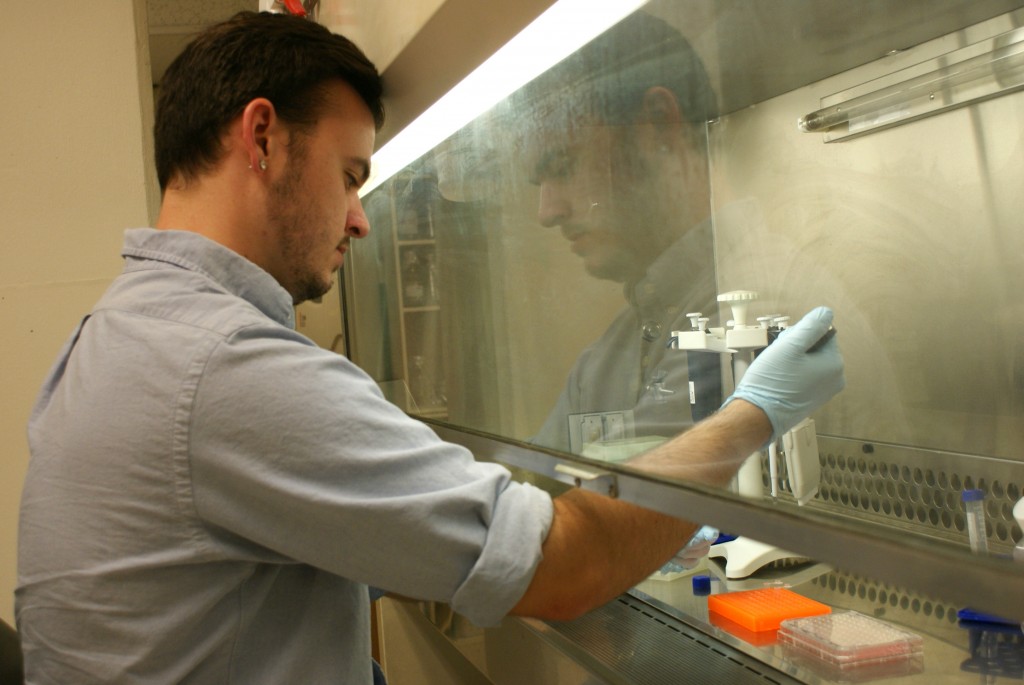Dylan Burroughs, second-year student at The Ohio State University College of Veterinary Medicine, is working on some of the world’s first research on Feline bronchioloalveolar carcinoma (BAC), a form of lung cancer.
The best method for researchers to study BAC without running tests on a cat is to use a live model of the cancer, called a cell line. Worldwide, there is only one feline BAC cell line available, so he and his mentor Dr. Gwendolen Lorch, assistant professor at Ohio State in Veterinary Clinical Sciences, had to wait a while to acquire it for their research.
The team used the cell line to test different concentrations of drugs and how they work in controlling the cancer. They also measured gene and protein expression levels to know what cell regions should be targeted during treatment.
It is typical in human lung cancer for the epidermal growth factor receptor (EGFR), a protein that takes part in cell communication, to be overexpressed. The overexpression of EGFR and related genes leads to an overabundance of cells, which could play a large role in causing the cancer, Burroughs said. In an attempt to stem the excess cell growth, Lorch and Burroughs are testing the effect of EGFR inhibitors on the feline BAC cell line in addition to standard cancer-treatment drugs.

Dylan Burroughs, second-year veterinary student at Ohio State, works in the lab with a feline cell line. July 21, 2015; Columbus, Ohio.
In cats, this type of cancer tends to metastasize – or spread – to the paws. This complicates the effectiveness of treatment options because the tumors are growing in complex patterns that are hard to recognize and target.
The results of the study could potentially help human lung cancer research, but the team is mainly working on establishing normal values for feline BAC that will guide future scientists. They are also focused on understanding the method in which the tumors are able to spread from the lungs to the paws.
Burroughs’ study is being funded by the National Institute of Health, and he presented his findings at the 2015 Merial-NIH Veterinary Scholars Symposium at UC Davis.
Comments are closed